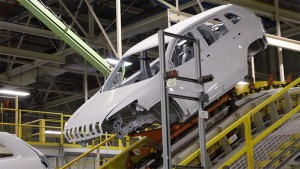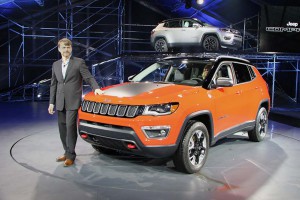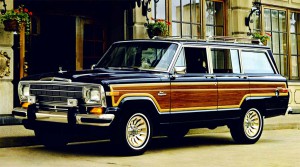It is one of the most iconic automotive brands on the market and, until recently, Jeep could be counted on to deliver sales growth and a steady stream of profits to parent Fiat Chrysler Automobiles.
So, what has gone wrong this year? Jeep volume was down 13% for the first half of the year, with the numbers off 11% in June, and another year-over-year slide expected to be revealed when July numbers are tallied up next week. While FCA reported strong second-quarter profits on Thursday, it took a solid performance by the maker’s other brands, including Maserati, to offset Jeep’s weak numbers.
The question is whether Jeep’s setback is a temporary one or something that could hurt it longer-term. The real test will come in the months ahead, especially once renovation work on the Jeep plant in Toledo, Ohio is completed and production of the brand’s next-generation flagship Wrangler model begins.
One person who tries not to seem worried about Jeep’s weak 2017 performance is brand boss Michael Manley, who said Jeep is “exactly where I thought we would be,” during a scrum at a recent 2018 product preview held by FCA at its proving grounds in Chelsea, Michigan.
(FCA profit doubles for Q2, even as Jeep takes a tumble. Click Here for a look into the earnings numbers.)
For his part, analyst Dave Sullivan, of AutoPacific, Inc., agrees, suggesting, “I’m not concerned” by the sales decline once the reasons are made clear. The simple fact, added Sullivan, is that Jeep is at a major transition point as it shoots to boost global sales to 2 million in 2018 – or four times what it sold a decade earlier.
As to why the numbers are looking lousy this year, observers point to several factors:
- Jeep only last month relaunched production of the Cherokee at the newly renovated Belvidere, Illinois assembly plant that had been building the now-abandoned Dodge Dart. Cherokee was moved out of the old Jeep plant in Toledo;
- The Toledo plant itself is in the midst of a massive makeover ahead of the launch of an all-new version of the flagship Wrangler later this year;
- Jeep has also reined in sales to daily rental fleets of the old and largely unloved Compass and Patriot models, and will focus an all-new version of the Compass on the retail market.
Of course, the automaker also faces growing competition in the classis SUV and crossover-utility vehicle, or CUV, segments, with a reborn Ford Bronco in the pipeline, among others. And those new models are coming just as the U.S. automotive market starts to slip for the first time since the industry’s post-recession rebound.
So Jeep “could get there,” to 2 million sales in 2018, said Joe Phillippi, a veteran automotive analyst and head of AutoTrends Consulting, “but it could take plenty of (incentive) money on the hood, especially as the U.S. market is going to be soft.”
For his part, Jeep boss Manley seems far less concerned. And that may be because 2017’s relative drought will be followed by a veritable product blitz in 2018. There’s a big update to Cherokee on the way aimed at making its design less polarizing. And the new Wrangler will tap into a well of support, many potential buyers sitting on the sidelines waiting to see what it looks like.
“You’ll be really surprised how far we’ve been able to move things in terms of capability, fuel economy, ride comfort, noise and all of those things. I’m very pleased with where it is,” Manley told the British publication Auto Express.
The brand’s smallest – and one of its newest – offerings, the Renegade, will also get an update next year.
(Jeep Wrangler named “most American vehicle.” What does that mean? Click Here to find out.)
Longer-term, look for the long-rumored Jeep pickup, which the maker has only recently confirmed for launch in 2019. “The money machine,” as analyst Phillippi likes to call the Jeep Grand Cherokee, is due for a complete makeover in 2020. That same year, the brand will finally relaunch its one-time top-end Wagoneer.
And brand managers are looking even further out. In his interview with AutoExpress, Manley revealed, “We have clearly defined plans for electrification of our vehicles.” Even if, as expected, the Trump Administration rolls back the tough 2025 U.S. fuel economy mandates, Jeep will have to keep boosting its fuel economy for the overseas markets providing the bulk of its growth, China and Europe, in particular.
Jeep has other issues to address. The brand has scored near the bottom in a number of recent consumer studies, including the 2017 J.D. Power Initial Quality Survey, a measure of “things-gone-wrong,” as well as Power’s APEAL study. Released this week, it’s a look at “things-gone-right,” the sort of things that can get buyers to forgive faults and return to a brand.
Jeep has “a different type of buyer who ignores most of that stuff,” contends analyst Sullivan.
But there’s little doubt Jeep is going to have to continue upping its game in the years ahead, especially if parent FCA hopes to have the brand serve as one its primary money machines.
(Click Here for more on Power’s 2017 APEAL study.)





So the plan to flood the world with Jeeps is backfiring? Just another realization of what happens when you put all your eggs in one basket.
How do these people become corporate heads?
Do they not look at the past and the mistakes made and try to avoid them?